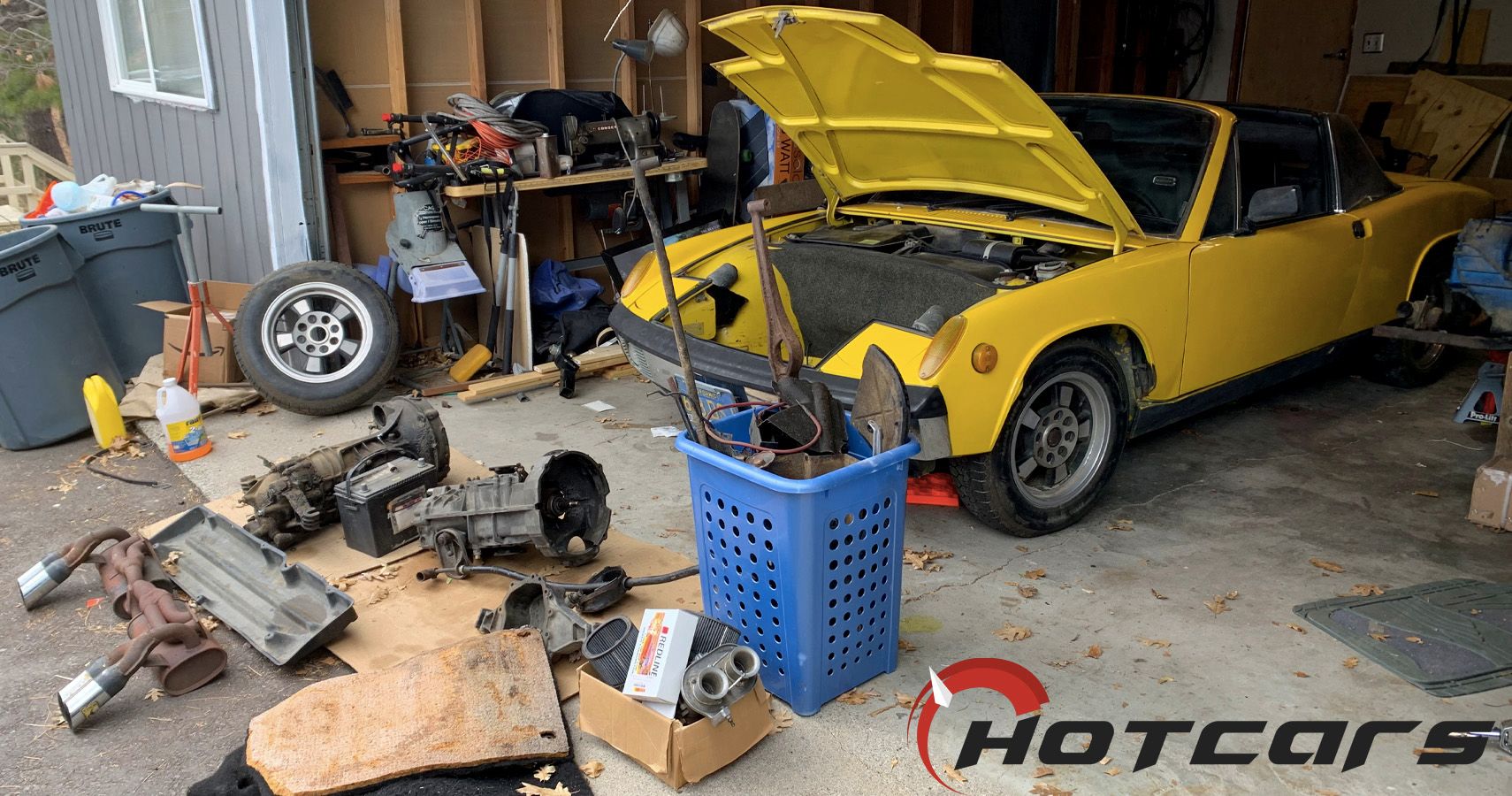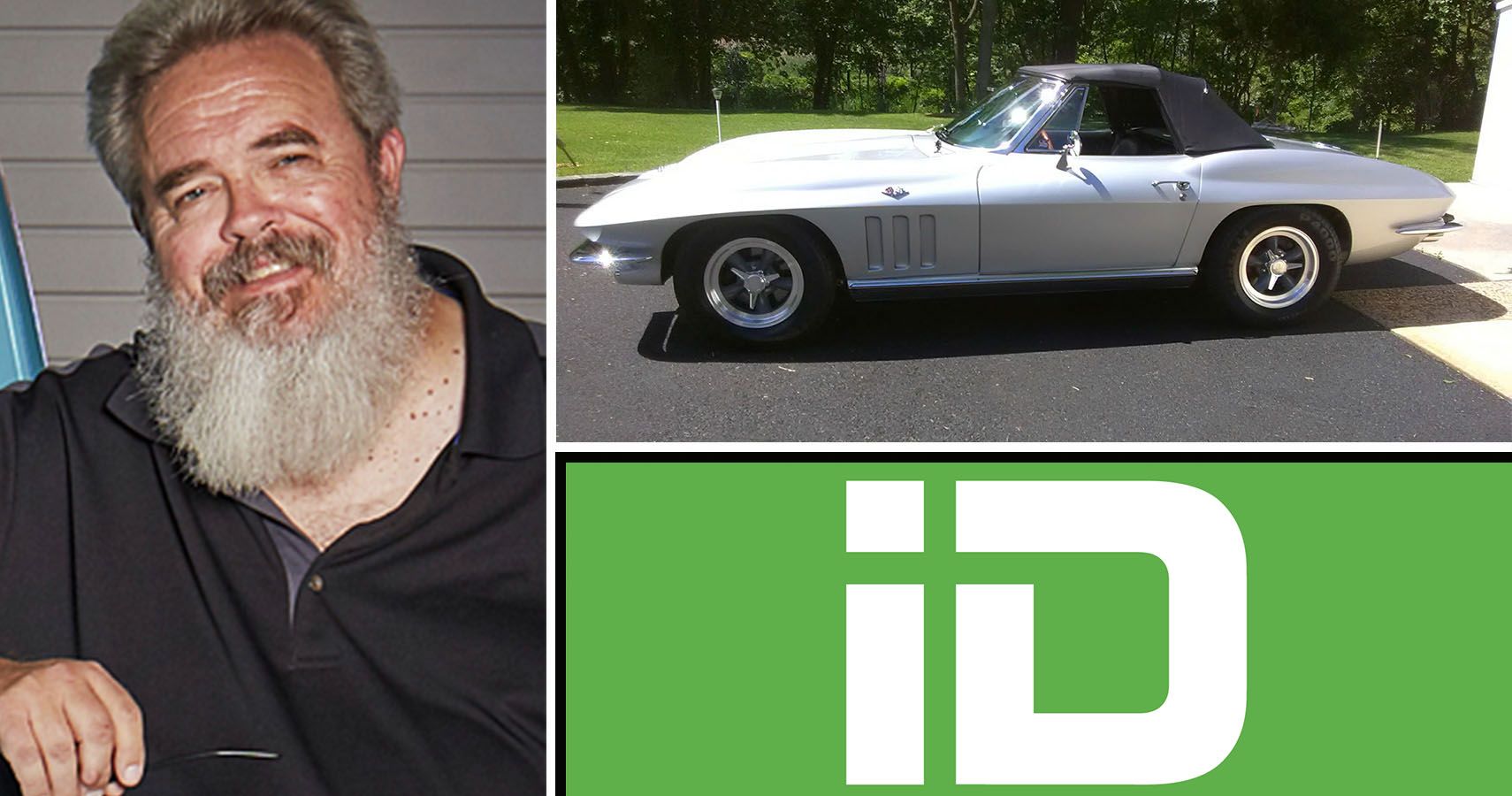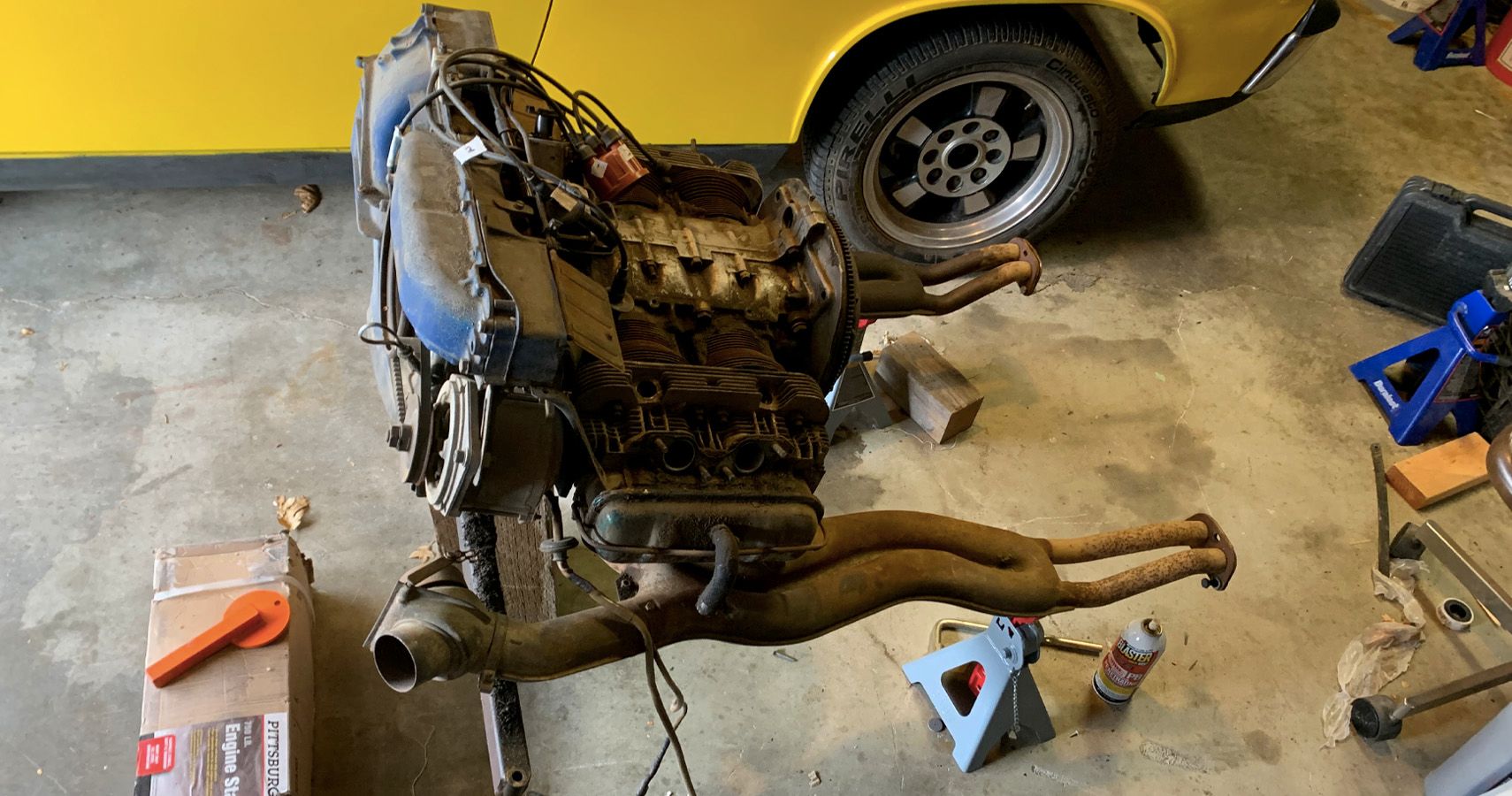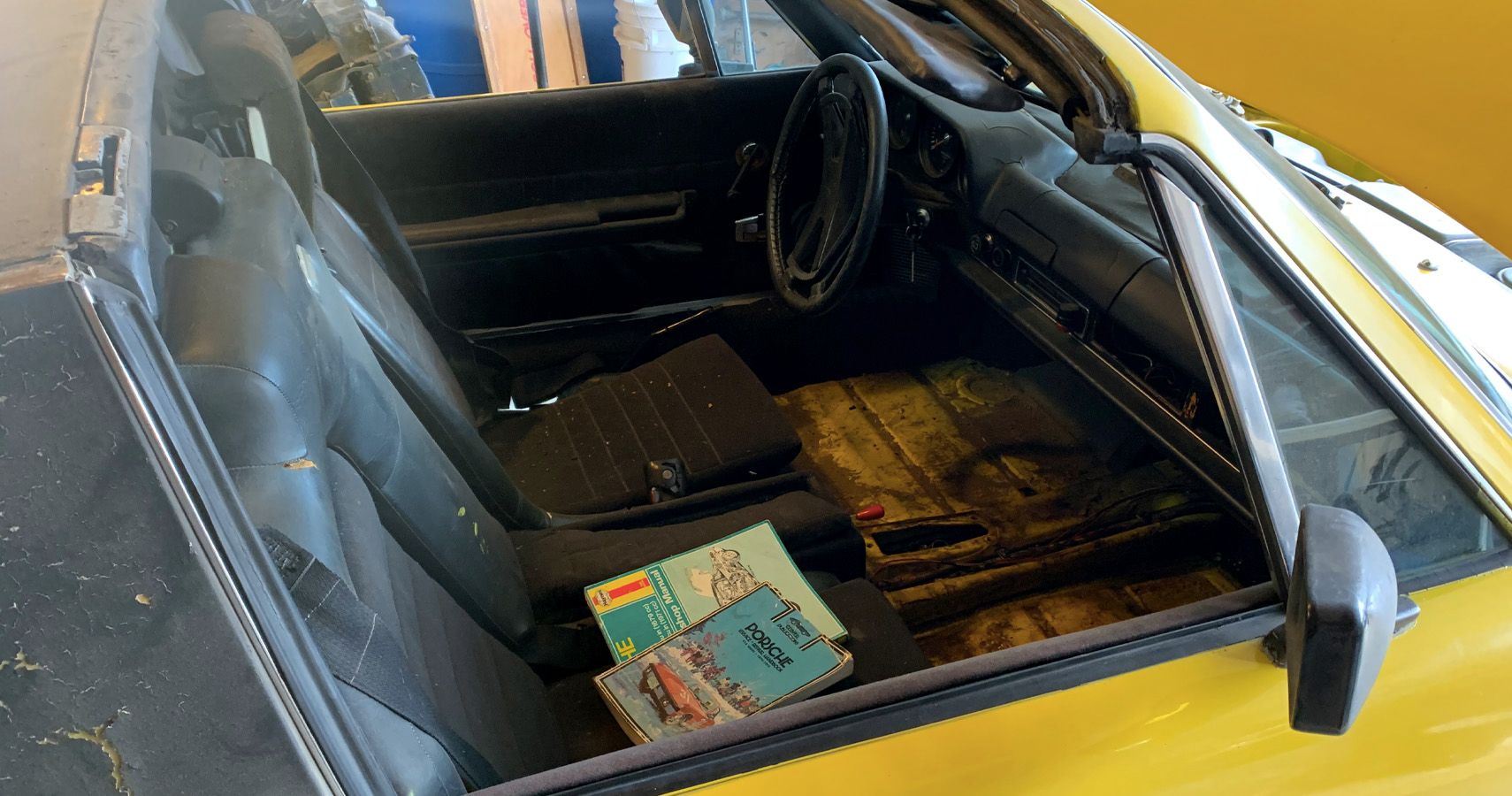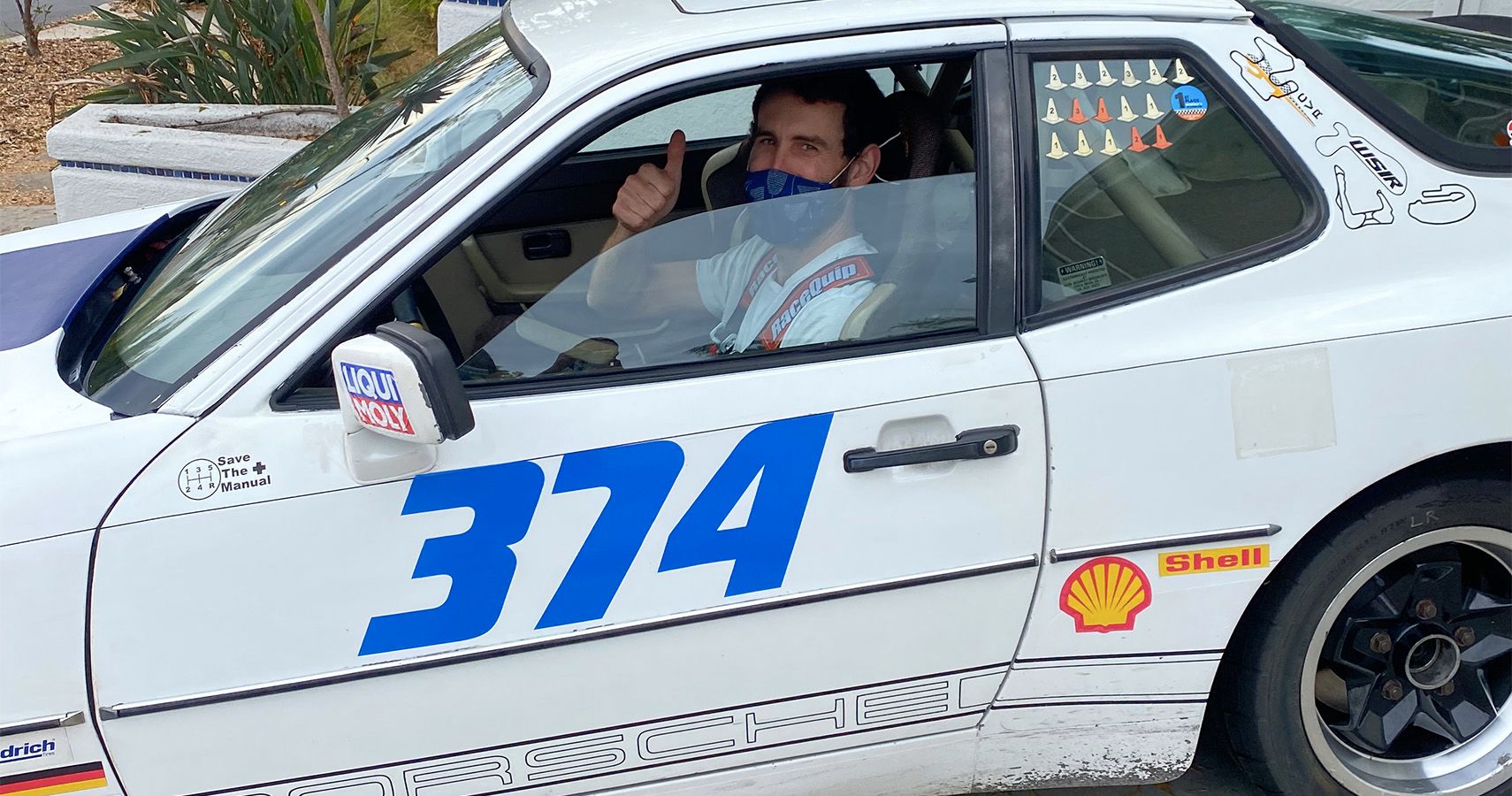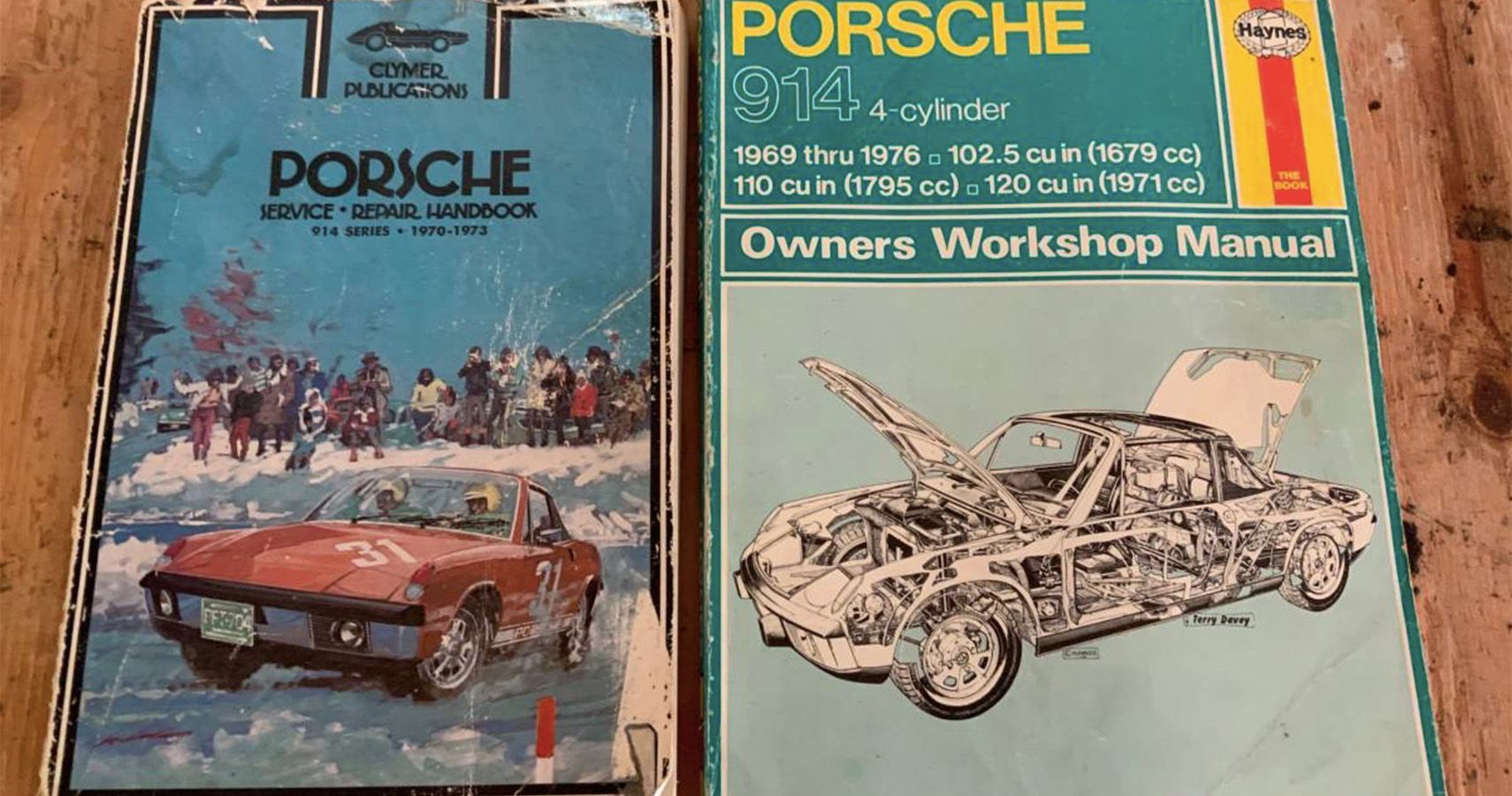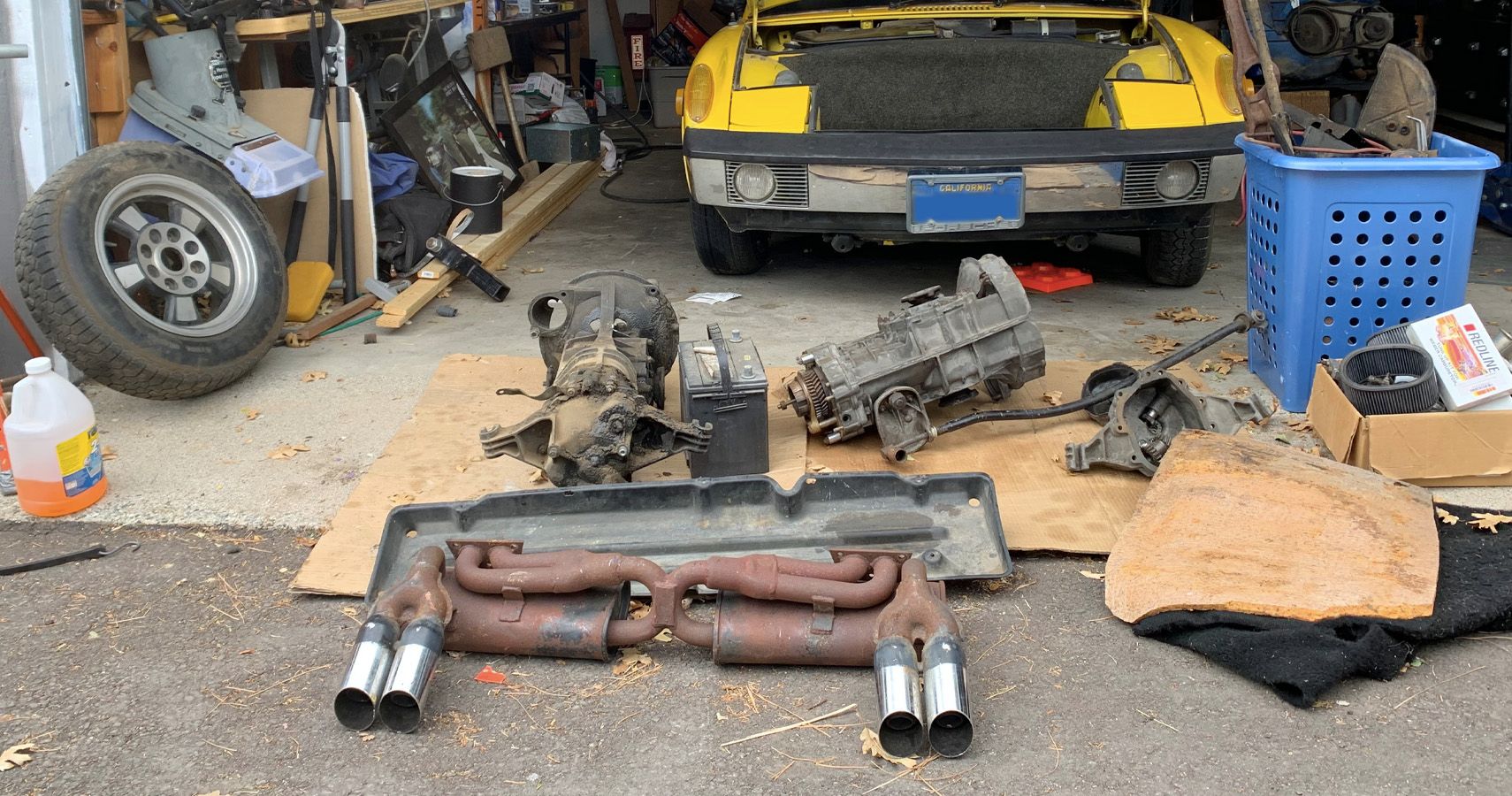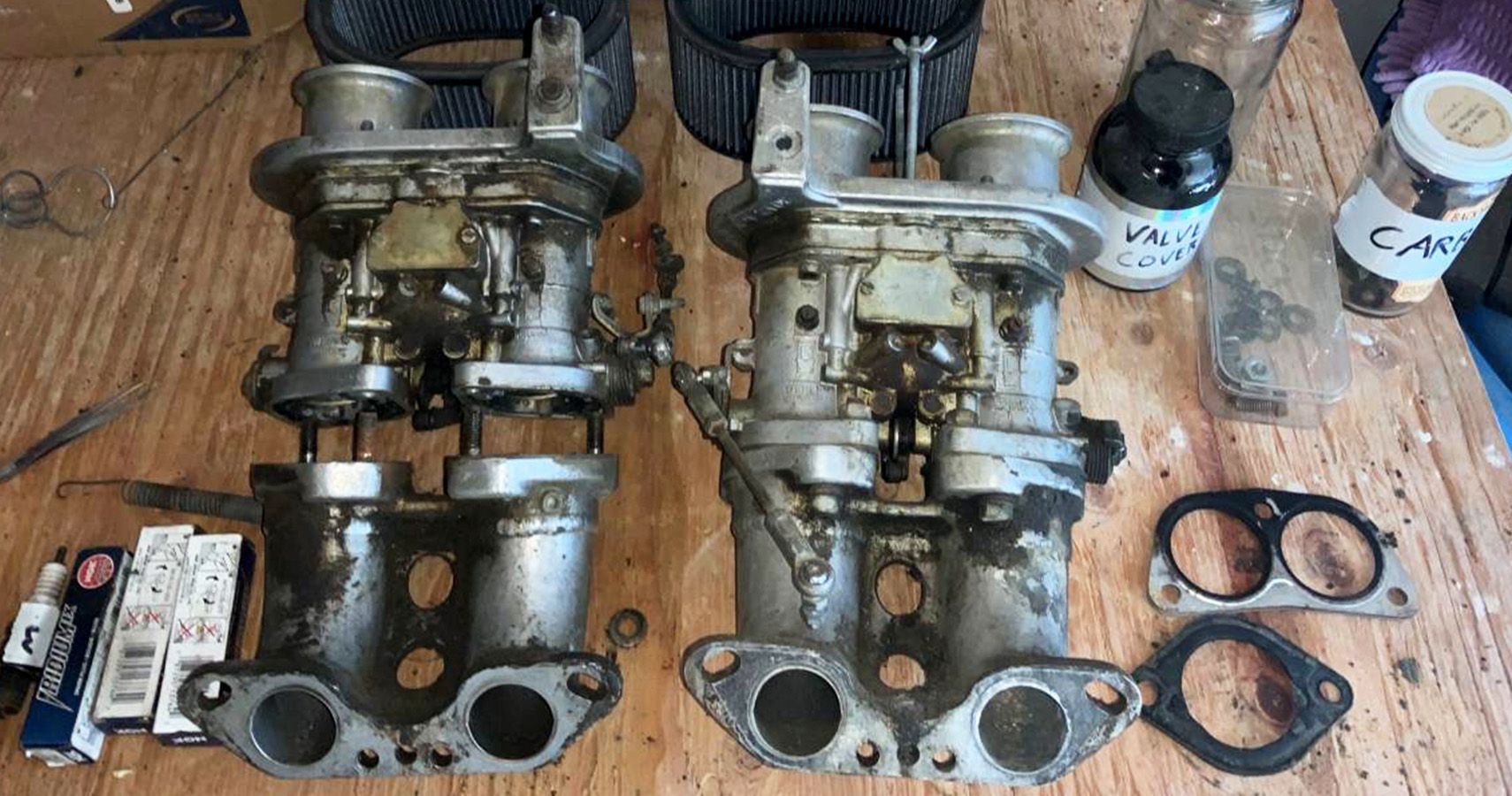As an automotive journalist, I spend a ton of time researching, writing about, discussing, and driving cars. While the driving aspect of this gig may have taken a hit during the pandemic, mostly because there are simply fewer places to drive to, staying home has only inflated the rest of my automotive obsession.
Maybe I miss driving. Sure, I've gota Gen 2.5 Mitsubishi Montero that was fully prepped for winter ski trips—I typically spend about half the season on the road in Colorado, Utah, and Northern California—but driving it to wait in line at Trader Joe's seems a lot less fun. Meanwhile, my weekend forays into the Malibu Hills and on the Angeles Crest have decreased during the pandemic, as well.
When I interviewed Brian Rabold, Hagerty's VP of Valuation, he told me that entry-level collector car values and sales were humming along during the pandemic, despite economic concerns, as people with too much time on their hands sat around daydreaming that they could social distance behind the wheel of an awesome car. As Rabold tells it, nobody should find themselves surprised at the fact that I've gone out and bought a project car, especially after a bit of nudging from the likes of Magnus Walker when I visited his shop and checked out his Porsche 914 SEMA art car.
Before I made the leap, however, I spent a ton of time narrowing down my potential pool of candidates. I also chatted with CARiD's Mike Grady, an experienced restorer who works on both classic sports cars and motorcycles, about the prospect of taking on a project car, how much time and money might truly figure into the process, and what to focus on while searching for the perfect starter platform.
Mike Grady Of CARiD Shares Tips On Starting A Project
Mike Grady started out in the auto industry as a hot-rodding teenager, car-crazy enough to get himself a gig working for a local mechanic. In short order, he was working on engines and then skipped over to a machine shop where he started building the engines. Now 63 years old and living in New Jersey, Grady writes product pages, product descriptions, marketing copy, and articles for CARiD, for both cars and motorcycles. His 1966 Corvette convertible project seen above was a ground-up process that took years, but he can now say it's complete.
“This was indeed a project car," Grady explained. "I mean the frame was sandblasted, the body needed quite a bit of work, I rebuilt the engine, transmission, differential. I did all the suspension, the brakes myself, and the wiring. And I assembled as much of it as I could. I didn’t do the bodywork—I stripped the paint off as much as I could to save some money, but as far as completing the bodywork, those old Corvettes you really need somebody who knows what he is doing and has some class."
Grady also has a '61 Thunderbird sitting around waiting for his attention, plus a couple of classic British bikes including a 1968 Bonneville and a 1971 Norton Commando. He dailies a GMC Sierra short bed with a small lift, a 5.3-liter LS under the hood, and Magnaflow exhaust.
In terms of advice for me, right as I was in the middle of my search, Grady told me to really focus on why I was looking for a project. “Do a project car because you like working on cars," he admonished. "The reason I say that is because some people, especially people who are new to the hobby or have never done it before, they think that if they get a project, something that’s cheap and I put a lot of sweat equity in it, somehow I’m going to save some money. And that’s just not the case."
I told him I'd done a fair amount of work on my old Mk1 Audi TT and the Montero, keeping these high-mileage cars rolling and performing moderately well without too much time in the mechanic's shop. Grady could identify with the sense of pride that a successful repair creates.
“Do I enjoy this process?" He asked, rhetorically, "Do I like getting my hands dirty? The satisfaction of doing the repair and seeing the vehicle function properly, does that do it for me? Beyond that, you have to decide what you wanna do with the car.”
RELATED: EXCLUSIVE: HotCars Checks Out Magnus Walker’s Porsche 996 Collection
A Simple (And Dirty) Engine On Display
Personally, I already knew what I wanted to do with the project car I would eventually buy, besides working on it. I wanted a lightweight, nimble sports car that would handle well in the canyons around Los Angeles. Big power, as in the beefy LS or torquey 2JZ swaps so popular online today, aren't in my plans—I was looking for simplicity, which further helped me narrow my search to pre-1975 model years hoping to avoid California's stringent smog-testing requirements.
Grady was on board for that assessment, even though he's in New Jersey, saying, "Me, personally, I’m always going to stay with something that’s probably going to be no newer than the 70s.”
We discussed the increasing computerization of cars, which he said has even started causing problems for Corvettes and Mustangs from the 1980s as owners struggle to find computer modules that will work for their cars. OEM and aftermarket support also varies based on make and model year, and though Grady admittedly focuses on American classics, he did tell me, "I think Porsche and Mercedes, they understand the historical aspect of their cars and the heritage, and I think maybe they know that someone who has an older one is more likely to have a new one as their daily driver."
Nobody Expected The 914 To Be Worth Anything, So Many Were Neglected
He'd presaged one of the major selling points that makes a classic Porsche so attractive to collectors: the wide range of knowledge and parts available online. At the time of our conversation, I'd pretty much honed in on a Porsche 914 or a Datsun 240/260Z. But I was open to other prospects if the price was right.
Once I actually began contacting sellers who had listed cars on Craigslist or on forums, though, the disappointments racked up pretty quickly. My first 914 looked a little funky, midway through a Mickey Mouse restoration project, but looked probably liveable with some more work. I was hot to trot and quickly scheduled a PPI—somewhat hilariously, when I drove the car about 15 minutes from the seller's house to C&F Auto in Costa Mesa, as recommended by local Porsche personality Paul Kramer of Auto Kennel, the car broke down just as I coasted into the lot.
John, the shop's owner, had a good sense of humor about the situation and hand-tightened the 914's clutch cable, which had loosened after being installed incorrectly. Next, he showed me the infamous "Hell Hole" beneath the battery tray. It looked alright from above but from below, with the car on a lift, hand-sized holes perforated the 914's structural elements—and some terribly executed rust repairs under the front trunk pan were enough for him to advise me to "Run" (as in, away from this car).
Test Driving A Track-Prepped Porsche 944
Next up, I branched out a bit after spying a track-prepped 1986 Porsche 944 on Craigslist that looked the business with a roll cage, racing buckets, and decals but somehow remained street-legal and even still had working air conditioning. The seller's listing stated the car needed nothing and he emphasized that claim to me on a phone call, but when I looked over his records in person and test drove the car, I discovered that he was autocrossing on an eight-year-old timing belt and the transaxle under deceleration sounded like a broken coffee grinder.
Turning away from Porsches, perhaps in the hopes of finding Japanese engineering superiority during the 1970s, I next visited a two-owner Datsun 260Z finished in a strange brown paint job but otherwise in about as pristine, original condition as imaginable. The car was very nice but the seller was a quintessential Craigslist personality and I couldn't tell if he was being rude or just plain weird. The warning flags should have been up but I liked the car enough to arrange for a ride down to buy it and drive it home about 30 miles. But that day, when I texted the seller that we were on the way, he responded with just a question mark, before revealing he'd sold the car the day before. I asked him why he didn't tell me while or after we were texting to set up my purchase and he started denying we'd made the appointment—even when presented with a screenshot of our texts, he denied. Then he started berating me, saying I didn't have cash in hand (at the very moment when I had an envelope full of cash in my hand) and that I needed to work on my communications skills. Safe to say, I'll be informing anyone in the also-strong Z community to avoid that guy at all costs.
Next up was a Porsche 914 that popped up in the San Francisco Bay Area—a bit of a drive, but the seller was adamant that his hot-rodded 2.4-liter engine was built so well that it had never leaked oil in three years. And that the paint was probably original, the car was 100% rust-free, and all the gauges worked. The photos in the listing were pretty bad but he was older (over 70) and didn't seem to use his phone to take pictures or text very well. Over the course of a few phone calls, I was feeling good about the guy, all of which immediately evaporated after a six-hour drive involving two trailer tire failures.
From twenty feet away, the car had clearly received an awful repaint and with the decklid up, rust holes were apparent without even bending in to look closely. Underneath, the entire drivetrain was actively dripping from tip to tail, and on the interior, neither the speedometer nor odometer functioned. After a quick ten-minute test drive, the seller then proceeded to act like the copious smoke billowing from the engine bay and out from the wheel wells didn't exist. He refused to get down and check out the steady stream of engine and gear oil drips, and when I explained all of the above to him, his response was, "Not even," (a direct quote) and then he stomped back into the house, never to be seen or heard from again.
Helpful Guides In Print And Online
After an uneventful but subdued drive back to Los Angeles, I was getting pretty disheartened at the prospect of finding a good car. But at the very least, the Bay Area 914 had solidified in my mind that this was the model I wanted—it just drove so well, with go-kart steering, lightweight characteristics, a simple interior, and a peculiar exterior. A mid-mounted Volkswagen engine, the rear-mounted transaxle, and torsion bar suspension up front all sounded perfect (fewer rust holes and oil leaks preferred). Plus, as Mike Grady had told me, the Porsche community online is enormous, which makes a big difference.
“The access to information is huge," Grady said. "That didn’t exist back in the old days, there was what you could get in print. Today, you’ve got YouTube and video. Particularly with popular cars, there’s plenty of forums where you could probably post a question and get an answer from somebody who's knowledgeable, from someone who's been there and gone through the same thing. So the modern technology in that respect is great, it’s much better than the old days for someone considering doing a project now.”
A Porsche 914 And A Pile Of Parts
But how to find one? The very afternoon I got home from the Bay Area, Craigslist alerted me of a new listing: a father-and-son project 914 in a state of partial disassembly. The price was right and it was located relatively nearby in Lake Arrowhead, so I called the seller and quizzed him about rust (none), the state of mechanicals when parked a year ago (it ran, but backfired, leading to the engine getting dropped), and all the parts that came with. The next morning early, I drove up to Lake Arrowhead, checked out the car in detail, crawling around in the frigid air and taking in a 914 with the least rust I'd ever seen on one. The cosmetics were rough, with overspray everywhere from an older repaint, plus the interior was reupholstered at some point with polar fleece for the seats and door cards.
The engine, two transaxles, dual double-barrel Weber carbs, and all the various mounting accouterments were piled out front, some in a laundry hamper. Admitting the car was a bit rougher than expected, the seller came down even further in price, to the point where I couldn't say no. We loaded the car up and while towing it home, I began worrying. Had I made a mistake? Would this car do the trick? Would it cost an arm and a leg?
But then I thought back to my conversation with Mike Grady, who told me, "If you think that doing a project car is going to be kind of like the spinach that you have to eat to have your dessert, you shouldn’t do one. You’re better off saving your money and buying a car that’s done. Do a project car because you like working on cars, because you like the process.”
Rebuilding Everything, Starting With The Webers
At this point, I'm pretty sure I could quickly resell the yellow 914 and recoup what I paid for it without much of a wait. But I'm also optimistic this car could serve as a solid foundation—probably after an engine and transaxle rebuild, and then the unknown suspension, braking, and steering work that may be required. Replacement seats and door cards, hopefully not too much electrical work, but who knows, it will be a process and I'm looking forward to it.
Step one in the plan (so far) will be reassembling the whole car after rebuilding the carbs that the seller believes caused the backfiring. And who knows, maybe it'll run. The chances seem slim and I've budgeted for plenty of engine and trans work afterward. In the meantime, I'll learn what I've got and what I'm missing, while getting a better feel for what I'm looking at. I like the funky style, the weird yellow paint, and the overall design of the angular Targa-top body with two trunks and absolutely nothing extra. Hopefully, one day in the not too distant future, this little yellow 914 will be ready to roll and deliver on Porsche's erstwhile promise of a sub-2,000-pound mid-engined sports car. Stay tuned for updates here on HotCars.com and on my Instagram to see just how much work goes into reviving this project car.
Sources: carid.com, excellence-mag.com, cfautocm.com, and autokennel.com.

